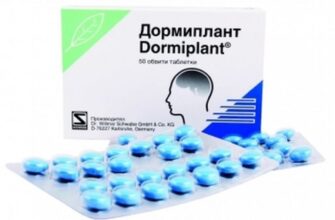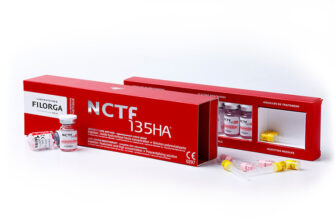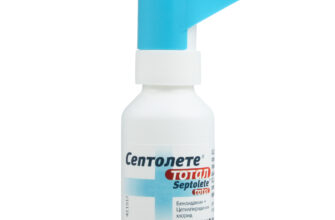Review of the best according to the editorial board. On the selection criteria. This material is subjective and does not constitute advertising and does not serve as a purchase guide. Before buying, you need to consult with a specialist.
For the first time in drug stories, the qualitative definition of 'best' has to be removed. If we are talking about rhythm disturbances, then the choice of drugs is small, and the drugs themselves are chosen not by the patient, but only by the doctor. The patient is deprived of the right to choose antiarrhythmics: ignorance can turn out to be too expensive. An ordinary person without medical education, perhaps, has never heard of the names of these drugs. And this is very good and healthy, since serious medications for stopping heart rhythm disturbances can, if used incorrectly, turn into serious complications.
Judge for yourself: those drugs that are sold in a pharmacy without a prescription (over-the-counter) rarely cause serious complications, such as cardiac arrest. But drugs for the treatment of arrhythmias (fortunately, not all) can cause it. So, if you buy a medicine for constipation at a pharmacy of your own choice, then in case of an overdose, you risk getting the opposite effect, and sitting in a small room all day.
But if you yourself try to buy any medicine for arrhythmia that you want, then, firstly, they will not sell it to you, and secondly, the mistake can be fatal. You will be asked for a prescription, and sometimes for a diagnosis. And here we are faced with the definition of arrhythmia, or heart rhythm disturbance. As a rule, those sensations that a person may experience in the form of interruptions in the work of the heart, a feeling of a dip in the chest, which is accompanied by an unpleasant feeling similar to the rapid lowering of an elevator, are not related to serious arrhythmias. Most often, we are talking about ordinary sinus extrasystoles, when the heart simply misses one full beat, and then it appears much more noticeable and stronger, but a little out of time, and therefore too noticeable. This is unpleasant, but not fatal. True heart rhythm disturbances may not be felt at all, or may manifest with other symptoms. For example, these are changes in blood pressure, shortness of breath, fear of death, and other serious signs.
Therefore, this material is written solely for informational purposes, so that people without medical education have an idea about the group of antiarrhythmic drugs, and do not confuse them with those drugs that are taken in haste. Indeed, most often with heart interruptions and malaise, Corvalol, soothing herbal teas, motherwort tincture is usually used. In some cases, especially in old age, Validol helps, which irritates, chills and distracts, soothes, but does not affect the heart. Indeed, it is popularly believed that interruptions in the heart, discomfort and a feeling of pain are most likely associated with nerves and stress, especially at a young age, and this is partly correct.
Real drugs for rhythm disturbances are prescribed only by a doctor, moreover, only by a cardiologist. Your usual GP may prescribe some of these drugs, but for different reasons. Most often, in this case, we are talking about beta-blockers. This is a large, solid group of drugs that is very widely used for the treatment of hypertension, and therefore is prescribed by a therapist. But if we are talking about other groups or classes of antiarrhythmic drugs, then either a cardiologist or even narrower specialists should prescribe them: this is a cardiologist-arrhythmologist. Here are those patients who have an established diagnosis, and who are being observed by arrhythmologists – and are advanced readers of this material, and consumers of drugs for arrhythmia.
The list of drugs given in the article is not intended to show any advantages and disadvantages of the drug. Indeed, in the case when it comes to the treatment of serious disorders, which are cardiac arrhythmias, the patient does not have to decide on his own about certain advantages or disadvantages. Here there is the concept of strict indications and contraindications, and nothing can be done on your own.
Independent actions mean not only self-medication, and prescribing to oneself even the same drug that the patient has taken before. These are questions of changing the dosage, the time of administration, and even changing the drug to the 'same' one, only produced by another company. The last question is very important, since many imported quality medicines are becoming less and less available, and the transfer of a patient to domestic analogues leads to the appearance of undesirable effects.
This article describes some of the current drugs used to treat heart rhythm disorders. A review of the existing groups or classes of antiarrhythmic drugs was carried out, indicating the commercial names of the drugs and the price range that are relevant in the Russian Federation for the fall of 2019.
- What medications normalize the heart rhythm?
- How to choose a medicine for arrhythmia?
- Review of drugs for arrhythmia
- Class I – membrane stabilizing agents (quinidine-like) for arrhythmia
- Subgroup IA: procainamide (Novocainamide, Pronestil, Cardiorhythmin)
- subgroup IB – Lidocaine (Xylocaine, Xicaine)
- Subgroup IC – Propafenone (Ritmonorm)
- A separate class 1 drug for arrhythmia – Etacizin
- Class II – beta-blockers
- III class – drugs for arrhythmias that slow down repolarization (sotalol, amiodarone)
- IV class – blockers of 'slow' calcium channels from arrhythmia
- Some other drugs for arrhythmia
What medications normalize the heart rhythm?
Many different substances have been known for a long time that affect the heart rate. It has already been said above that if the patient does not have an organic lesion of the cardiac conduction system, but there is the influence of stress and emotional stress, then tranquilizers and sedatives, herbal teas and tinctures, and even mild antidepressants will quite cope with arrhythmia.
More serious activity is possessed by drugs that affect the exchange of mediators. These are cholinomimetics and anticholinergics, adrenergic blockers and adrenergic agonists. These are local anesthetic agents, ranging from the well-known lidocaine, when injected directly into the bloodstream. Even some drugs for the treatment of epilepsy, or anticonvulsants, appear to be able to normalize the heart rhythm. In some cases, very simple drugs, such as potassium chloride or sodium bicarbonate, can also restore disturbed heart rhythm when the acid-base state changes.
The purpose of the intense search for cardiologists and pharmacologists was to find such drugs, which would have an effect on the heart rate not as a side effect, but as the main one, which can be well predicted and calculated. Here's an example. Beta-blockers are great for tachycardia. If the patient has a very high heart rate, for example, with thyrotoxicosis, or pheochromocytoma – an adrenal tumor, then they bring the heart rate back to normal. But at the same time, they significantly lower blood pressure. On the one hand, this is good when it comes to a patient with hypertension. But in the event that a person has an episode, or a paroxysm of tachycardia against a background of low pressure, then it is simply impossible to use adrenergic blockers. Although they will cause a decrease in the rhythm to comfortable values, they will surely 'overwhelm' the blood pressure until it collapses or even faints. Therefore, we need those medicines that act only on the rhythm. Unfortunately, this is ideally not possible. After all, changing the rhythm changes the strength of the contractions, and so on. For this, it was necessary to look for means that act on cell membranes, ion transport, and changes in the electrical properties of myocardiocyte membranes. Eventually, several classes of antiarrhythmic drugs are now emerging. But how do you choose a medicine? Is it easy or not? What are the tasks of the doctor?
How to choose a medicine for arrhythmia?
Choosing a medication to control heart rhythm disturbances is a serious task. The arrhythmologist must, in addition to the main effects of the drug and indications, take into account the following factors:
- the gender and age of the patient;
- the presence or absence of organic lesions and heart disease;
- what form of arrhythmia exists before the drug is prescribed;
- whether the diagnosed arrhythmia is one disorder, or there are several sources and types of arrhythmias at once;
- whether the patient has an enlarged heart or cardiomegaly;
- are there signs of heart failure with symptoms of congestion and edema;
- does the patient have bad habits, additional risk factors (overweight, high blood pressure);
- what medicinal substances the patient is taking, and especially diuretics and glycosides;
- whether he has angina pectoris, and what form is tension or rest;
- whether the patient had a heart attack, and what localization;
- does he have ventricular aneurysms;
- what is the ejection fraction of the heart, and how much it is reduced (the risk of complications depends on this, as will be shown below);
- how the patient tolerates exercise tests during bicycle ergometry, does he have ST segment depression on the electrocardiogram, which may indicate myocardial ischemia;
- whether the patient has coronary vessels affected by thrombosis, and how many branches of these vessels are affected;
- Did he undergo heart surgery – bypass surgery, ablation, attempts to install a pacemaker.
Finally, it is necessary to know the initial basic parameters of the ECG data, and imagine how they will change with the planned prescription of the drug.
The patient is first given a drug for the treatment of arrhythmia after two days of 'pure' Holter monitoring without any antiarrhythmic drugs. After he first took a single dose of the drug, long-term ECG monitoring continues, and a cycle ergometric load every hour. An ECG recording against this background allows you to assess the antiarrhythmic effect, the effectiveness of the dosage. After prescribing the drug, repeated Holter monitoring is required for 3-4 days, and if the desired effect has been achieved, the patient begins to take the drug routinely.
Thus, the appointment of an antiarrhythmic agent is a very serious process, and it can roughly be compared to the process of constant control start of a car engine during its tuning. So, when repairing the carburetor, the master can start the engine several times until he achieves stable idling by correcting the amount and quality of the mixture screws. Approximately the same is done by the arrhythmologist with the help of Holter monitoring while taking the drug and increasing physical activity.
Therefore, in the event that a patient with serious heart diagnoses comes to a doctor who sees him for the first time, and simply prescribes medicine from a lamp, then he needs to look for a real specialist.
The situation is aggravated by the fact that drugs for arrhythmia relief can have a so-called proarrhythmic effect. This means that the medication can treat the arrhythmia but cause a different kind of rhythm disturbance. In another case, it can aggravate the clinical picture, although in other patients with exactly the same diagnosis, the medicine will help. The possibility of developing a proarrhythmic effect requires frequent and prolonged exercise tests and daily ECG monitoring to make sure that the drug is not harmful.
How can this harmful proarrhythmic effect manifest itself? The patient, against the background of the appointment of the drug, may develop ventricular extrasystoles, there may be a paroxysm of ventricular tachycardia, some new arrhythmia may appear, which is very difficult to stop, for example, a polymorphic type of ventricular tachycardia. The heart rhythm may slow down and a so-called bradyarrhythmia may appear, or a sinus rhythm arrest, when the main source of contractions will be the underlying parts of the cardiac conduction system. Finally, atrioventricular block may appear in the patient while prescribing the drug.
All this will require either urgent withdrawal of the drug, or its slow withdrawal, if it cannot be abruptly canceled. All of this, of course, adds a lot of complexity to proper treatment regimens. Such as 'I appointed and forgot, we will see the result in a month', cannot be allowed in any way. Of course, if the doctor prescribes drugs that lower cholesterol production, this option is quite applicable, because the effect develops gradually. But drugs for arrhythmias, selected incorrectly, can kill a person a few minutes after the first dose.
But stop scaring the reader. It's time to get acquainted with the classes of modern drugs for arrhythmia relief. Drugs for the treatment of arrhythmias are divided into 4 classes. Some of them have their own subgroups. For simplicity, one representative for each class will be described, this will be quite enough.
Review of drugs for arrhythmia
| Nomination | Name of product | price |
| Class I – membrane stabilizing agents (quinidine-like) for arrhythmia | Subgroup IA: procainamide (Novocainamide, Pronestil, Cardiorhythmin) | 110 RUB |
| subgroup IB – Lidocaine (Xylocaine, Xicaine) | 43 rbl. | |
| Subgroup IC – Propafenone (Ritmonorm) | 302 RUB | |
| Separate class 1 drug for arrhythmia | Etatsizin | RUB 1,455 |
| CLASS II – BETA-ADRENO BLOCKERS for arrhythmia | Anaprilin, Obzidan, Tenormin, Betacard, Betalok, Egilok | RUB 24 |
| Class II – drugs for arrhythmias that slow down repolarization | sotalol, amiodarone | RUB 98 |
| IV class – blockers of 'slow' calcium channels from arrhythmia | Verapamil, Isoptin, Finoptin | 43 rbl. |
| Some other drugs for arrhythmia | digoxin | RUB 30 |
Class I – membrane stabilizing agents (quinidine-like) for arrhythmia
Medicines for restoring the rhythm, belonging to the first class, inhibit the automatism of the main heart node – the sinus. If the dose is too high to toxic, then the activity of all pacemakers in general will disappear, and the heart will stop. There are three subclasses: 1a, 1b and 1c. Their influence on the action potential of the myocardium is different. So, drugs of the 1st subclass increase it, the 2nd decrease it, and group 1C does not change it.
Subgroup IA: procainamide (Novocainamide, Pronestil, Cardiorhythmin)

The drug is available in capsules and tablets, and in sustained-release tablets, and in ampoules for intravenous administration. Procainamide reduces conduction in almost all parts of the heart. These are the ventricles, atria, structures just below the atrioventricular node. An important property of this drug is that it increases the threshold of atrial fibrillation, but this is when administered intravenously, but tablets have a short-term effect of increasing the threshold of ventricular fibrillation.
Novocainamide suppresses the fourth phase of depolarization, and helps with those arrhythmias when the automatism of the sinus node is increased. The effect of this drug depends on the dose, and the active metabolite, which is formed in the liver, exhibits an antiarrhythmic effect. However, there is a danger of a sharp drop in pressure as the peripheral vessels dilate.
After taking the pills, the effect begins in about 10 minutes, and with intravenous administration – immediately. The maximum action is in an hour and a half, and the duration of the entire action is from 5 to 10 hours. Arrhythmologists note that short courses of treatment are better tolerated than long ones. But if it is prescribed for a very long time, then the risk of developing systemic lupus erythematosus increases, even if it helps very well.
A very important point in the appointment of this drug is the early postoperative period in patients after coronary artery bypass grafting for ischemic heart disease. If it is prescribed to patients within 4 days after surgery, then the risk of such rhythm disturbances as atrial fibrillation and ventricular tachycardia is significantly reduced. Other indications for choice would be prolonged episodes of ventricular arrhythmias, extrasystoles, supraventricular tachyarrhythmias, such as atrial flutter, Wolff-Parkinson-White syndrome, which can manifest as atrial fibrillation.
Novocainamide is strictly contraindicated with deep heart block, the presence of systemic lupus erythematosus and against the background of taking cardiac glycosides. A side effect can be an acute drop in blood pressure, headache, agranulocytosis, and other conditions.
When treating with novocainamide, special precautions must be taken. This is the control of serum creatinine, regular blood tests, and the study of antinuclear antibody titers for systemic lupus erythematosus. Novocainamide is produced by the Russian association 'Organic', one pack of tablets costs 120 rubles.
subgroup IB – Lidocaine (Xylocaine, Xicaine)
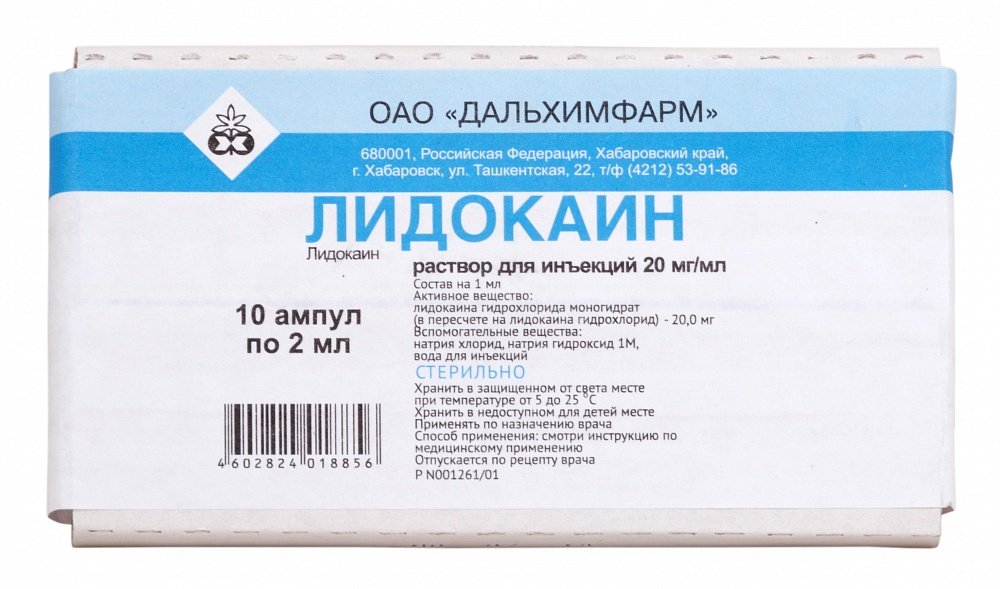
Of course, Lidocaine is much more widely known as a local anesthetic, for example, for small operations in dentistry. It is also an effective antiarrhythmic that blocks, unlike novocainamide, not only open channels for sodium, but also those that are inactivated. Drugs of this class practically do not affect the conduction inside the heart and therefore do not affect the widening of the ventricular QRS complex (the contraction time does not increase). Lidocaine selectively acts on damaged myocardial tissue, for example, during ischemia, and forms foci of local blockade of impulse conduction. It is important that lidocaine has almost no effect on the tone of the autonomic nervous system, unlike novocainamide, it does not lower blood pressure and does not decrease the fraction of cardiac output.
Lidocaine is shown, like other drugs of this class, with the development of ventricular arrhythmias against the background of acute myocardial infarction, ventricular rhythm disturbances against the background of an overdose of cardiac glycosides, with the so-called digitalis intoxication. Indications – and other ventricular arrhythmias, such as extrasystoles, tachycardia.
Resuscitators are very fond of using Lidocaine if there is a rhythm disturbance during surgery, or for example, cardiac catheterization. Lidocaine is always intravenous; patients do not receive the drug at home in tablets. It is administered within 3-4 minutes, it is impossible to enter quickly, since you can quickly get into the toxic dose range. Sometimes it is injected intramuscularly, but nevertheless, syringes for adults are used abroad, which can inject themselves intramuscularly 2 ml of lidocaine in order to stop arrhythmias. They refused from the pills, because very quickly you can exceed the therapeutic dose and get into the toxic range.
Lidocaine is prohibited from taking patients with atrioventricular block, with Wolff-Parkinson-White syndrome. If you recall, the previous drug, novocainamide, was indicated for this disease, despite the fact that the drugs belong to the same class, but to different subgroups. Lidocaine should not be prescribed to people with serious liver disease, and especially local anesthetics should not be combined with the addition of adrenaline, since there is a pronounced risk of vasoconstriction and ischemia.
Side effects of lidocaine are dose related and may develop bradycardia and sinus arrest. There are drowsiness and headache, numbness of the limbs, paresthesia, double vision and muscle twitching. Since Lidocaine can interact with other antiarrhythmic drugs, with the same novocainamide, it is strictly forbidden to independently attach any second drug to it without consulting an arrhythmologist.
Lidocaine is one of the most inexpensive drugs, and you can buy it at almost any pharmacy, of course, not as an antiarrhythmic drug, but as a local anesthetic. It is not intended for home use in Russia. 10 ampoules of 2 ml of 2% lidocaine produced by the domestic company 'Biosintez' can be purchased even for 20 rubles.
Subgroup IC – Propafenone (Ritmonorm)
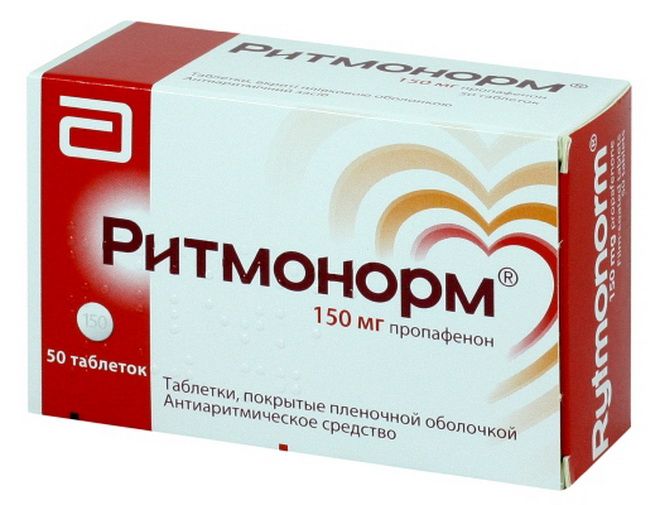
Medicines for restoring the rhythm from this subgroup prevent the work of fast sodium channels in the myocardium, do not affect the speed of the action potential in any way, but they slow down the conduction of the impulse along some beams. This is clearly visible on the ECG. The appointment of propafenone leads to a lengthening of the contraction of the ventricles, which is manifested by the expansion of the ventricular complex. These drugs have a pronounced antiarrhythmic effect, since they inhibit conduction quite strongly. But alas, propafenone is one such 'white and fluffy'. Therefore, at present, perhaps, of the drugs of this class, only he is used.
Back in the nineties, a serious double-blind, randomized, placebo-controlled study called CAST was conducted. It showed amazing things. All patients who had myocardial infarction, and at the same time had ventricular extrasystole, which proceeded without any symptoms, showed an increase in overall mortality against the background of long-term treatment with drugs of this class, namely Enkainide and Flecainide. Judge for yourself: in the group that received a placebo, that is, a dummy, mortality reached 3%, and against the background of taking antiarrhythmics – as much as 10%. This fact rang out like a bolt from the blue, and after it the decline of this popular and even prestigious subclass began.
Only propafenone remained beyond suspicion, which is used under the name Ritmol, Propanorm, Normaritm. He has a complex effect. Propafenone has local anesthetic properties, weak beta-blocking properties, and a 'in one bottle' calcium antagonist effect. Moreover, it is safe when it comes to the careful relief of various ventricular and supraventricular arrhythmias. But against the background of propafenone, such not very good things can develop, such as an increase in pressure in the right heart and pulmonary artery, a decrease in the cardiac index, and therefore it should not be prescribed to patients whose ejection fraction is less than 50%.
Currently, propafenone is used only in the presence of ventricular arrhythmias, which have a high risk of danger to life. Previously, they treated patients with a variety of ventricular and supraventricular arrhythmias, but it began to exhibit the same bad proarrhythmic effect that was found in almost 20% of all patients.
Propafenone is categorically contraindicated in cardiogenic shock, poorly controlled heart failure, in rare heart contractions (bradyarrhythmias) and weakness of the sinus node, in severe atrioventricular block, bronchial asthma, or in severe obstructive pulmonary disease. Against the background of propafenone, side effects such as atrial flutter, and even cardiac arrest, can occur, but with inept administration in large doses. After this side effect, nothing can be continued, but you can still add. These are hallucinations, confusion, liver damage, anemia, baldness and impotence, the development of systemic lupus erythematosus and even depression. The list is quite and quite decent. Despite this, propafenone is used in short courses in severe conditions and helps. One pack of 50 Ritmonorm tablets will cost, on average, 540 rubles. It is produced by Abbot.
A separate class 1 drug for arrhythmia – Etacizin
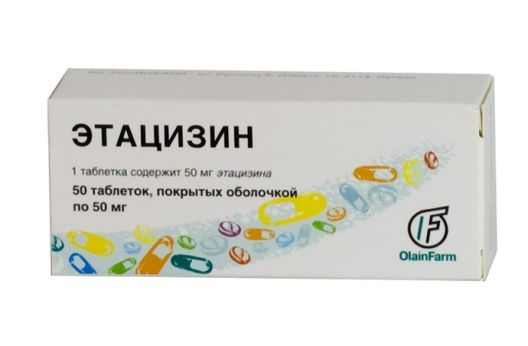
Etacizine (diethylaminopropionylethoxycarbonylaminophenothiazine) is available in tablets and in solution, it also reduces the incoming flow of sodium ions, and exhibits a significant antiarrhythmic effect in ventricular and supraventricular arrhythmias, when other antiarrhythmics have proved powerless. At the same time, its effect on the heart is clearly visible when conducting an ECG during therapy. The PQ interval is significantly lengthened by 17%, and the ventricular QRS complex is expanded by 25%. Thus, the impulse takes a quarter longer for the ventricles to contract.
The most important adverse effect from the introduction of Etatsizin is considered to be arterial hypotension, which, in combination with inhibition of intraventricular and atrioventricular conduction, can further aggravate the situation. Therefore, against the background of low pressure, one has to abandon this drug, despite its advantages. It is applied intravenously, rather slowly at a rate of 10 mg per minute. In tablets 50 mg – 3 times a day, but not more than 200 mg per day. It can also have a dangerous proarrhythmic effect, cause shortness of breath and palpitations, and can lead to pulmonary embolism and even myocardial infarction if used in high doses. In 15% of cases, patients had dizziness, in 10% of cases – nausea and even urinary retention. Despite this, Etatsizin is quite expensive. A pack of 50 tablets, designed for 3 weeks of use, costs an average of 1,500 rubles. Etatsizin is produced by the Latvian company Olainfarm.
In general, it should be said that after studies carried out in the last decades of the 20th century, it became known that class 1 antiarrhythmic drugs can increase the mortality of patients with arrhythmias if they are used continuously and for a long time. Currently, class 1 drugs are rarely used, and only in order to eliminate the symptoms of arrhythmia, or to maintain a normal sinus rhythm in patients with atrial fibrillation against the background of a healthy heart (without organic changes – chamber dilatation, hypertrophy, valve abnormalities). They are not used to increase the life expectancy of patients, and they are not prescribed to those people who have a high risk of sudden death.
What have replaced these funds, which were widely used in the eighties? The revolution was made by the development of medical technology: the appearance of defibrillators, cardioverters, the emergence of new, minimally invasive surgical interventions on the cardiac conduction system, and the introduction of new drugs into clinical practice.
Class II – beta-blockers
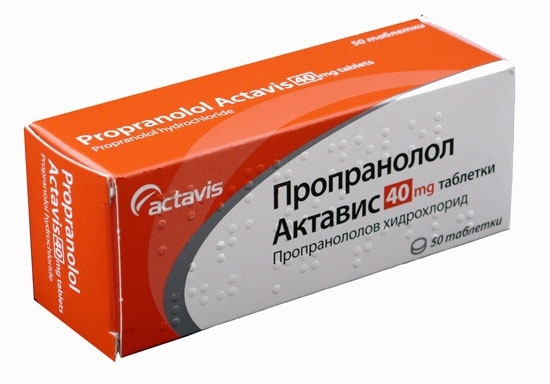
These drugs are much safer than the first class, are used to relieve high blood pressure, are often taken for a long time, but at the same time they affect the conduction and automatism of the heart impulse. All drugs from this group specifically suppress adrenergic stimulation of rhythm sources, and if administered in large doses, they begin to exhibit a membrane stabilizing effect. As a result, the rise in the action potential decreases, the electrical excitation threshold for myocardial cells (myocardiocytes) increases, and the rate of impulse conduction decreases.
We will not consider here the various groups of beta-blockers, we will only say that the existing general indications for their appointment are very, very wide. These are high, or supraventricular arrhythmias, ranging from sinus tachycardia and ending with atrial fibrillation, naturally, the tachyform of atrial fibrillation in the first place. These are ventricular arrhythmias in the form of extrasystoles. Blockers are shown for hypertrophic cardiomyopathy, under stress (after all, the heart contracts more often under the influence of adrenaline), with factorial paroxysmal supraventricular tachycardia. They are used to prevent recurrence of paroxysms of ventricular arrhythmia, including for the prevention of sudden death in patients after a heart attack. The use of beta-blockers significantly increases survival, for example, in patients with ventricular fibrillation.
Among the drugs are propranolol, nadolol, atenolol, metoprolol. But the following commercial names are much more often used: Anaprilin, Obzidan, Tenormin, Betacard, Betalok, Egilok. The most expensive of the widely used at the moment is Betalok, which is produced by the Swedish company Astrazeneca. One bottle containing 100 100 mg tablets costs an average of 490 rubles, which is also inexpensive.
Despite its widespread use, therapy with beta-blockers of arrhythmia also has many pitfalls. It is necessary to take into account the side effects – hypotension, the possible presence of latent sympathomimetic activity, the likelihood of developing bronchospasm, and many other effects, the assessment of which will be left to professionals.
III class – drugs for arrhythmias that slow down repolarization (sotalol, amiodarone)
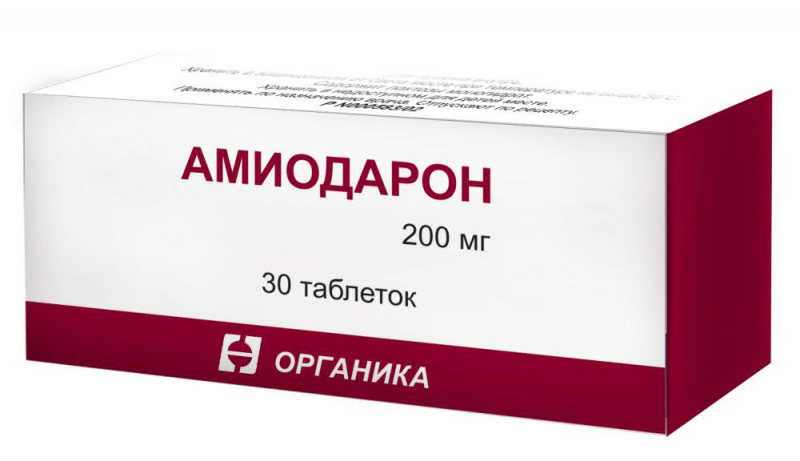
In the third class of antiarrhythmic drugs, amiodarone reigns almost completely, in the second place – sotalol and bretilium tosylate. Consider Amiodarone, which is generally extremely widely used in hospitals and ambulances, being one of the main antiarrhythmics.
Amiodarone (Cordarone), it is available in tablets and in solution. The effect of amiodarone on the heart rate is extremely complex, and it can be said that it is similar to the effect of all antiarrhythmic classes, 'a little bit' from each. We will not describe its action here, since a whole book may come out as a result. One has only to say that it is the most powerful antiarrhythmic drug, and most importantly, it can eliminate ventricular fibrillation and return a person from clinical death.
Long-term use of Amiodarone almost halves the development of ventricular fibrillation and ventricular tachycardia, but here is a one-sided game: if you stop taking Amiodarone, the life prognosis for a patient with severe rhythm disorders will worsen. Amiodarone tablets are effective not only after emergency defibrillation, but it can also bring atrial fibrillation back to normal sinus rhythm, up to 86% of all cases. Even if a patient with a pathology of rhythm before Amiodarone tried a lot of drugs, and he constantly needed cardioversion, that is, electrical restoration of the rhythm, then Amiodarone was effective in 20% of such difficult cases.
Intravenous amiodarone helps quickly – in the elderly with atrial fibrillation tachyform, which does not stop, and the progressive condition worsens. The introduction of Amiodarone within an hour leads to a decrease in heart rate, on average, by 40 beats per minute and a significant increase in low blood pressure. Cardiac output is increased and sinus rhythm is restored. Amiodarone also feels quite well in combination with such drugs as digoxin, quinidine, propafenone. The list of other indications for the use of Amiodarone includes the prevention of arrhythmias during open heart surgery, relief of dangerous arrhythmias, and so on.
Thus, in the United States, national recommendations have been adopted for the intravenous administration of amiodarone for life-threatening arrhythmias. The total daily dose for the first day of administration should be approximately 1000 mg, or 1 g. This significantly reduces the risk of overall mortality in severe arrhythmias.
However, each barrel of honey has its own fly in the ointment. Amiodarone should not be prescribed to patients with weakness of the sinus node and bradycardia, with a low ejection fraction of less than 40% (this is why you need to know it initially), with grade 3 atrioventricular block, with a low concentration of potassium in the blood plasma and especially against the background of powerful diuretic therapy, with high the risk of potassium loss. All of this with the appointment of Amiodarone can increase the risk of sudden death.
Of the side effects, Amiodarone has one serious potential condition that can be fatal – pneumonitis, that is, interstitial or alveolar inflammation of the lung tissue, with diffuse lesions and pulmonary fibrosis. The patient in this case has severe shortness of breath and wheezing in the lungs, hypoxia in the blood, pleurisy, increased ESR and a rise in temperature. Since the patient is usually elderly, and he has severe arrhythmia, organic damage to the heart, the mortality rate in these pneumonitis can reach 10%, which is a very high figure. The drug has a proarrhythmic effect, but it is mild in a maximum of 5% of cases, it can cause atrioventricular blockade and affect the liver.
One of the interesting features of Amiodarone is photosensitivity. If the patient takes pills for a long time, and in the summer is in the sun, then the open areas of the body are colored purple, bluish red-blue and gray. In some cases, while taking Amiodarone, thyroid dysfunction developed, both to a large (hyperthyroidism) and to a smaller side (hypothyroidism), half of the patients experience nausea, especially if there is heart failure, and the dose of Amiodarone is high.
While taking Amiodarone during surgery as a prevention of arrhythmia, blood pressure may suddenly drop and other unpleasant conditions may occur. But you need to be especially careful to inject Amiodarone intravenously. There may be phlebitis when the solution is injected into a peripheral vein, so in order not to 'burn' it with Amiodarone, its concentration should be low. An intravenous dropper should be made of a special material, since polyvinyl chloride, from which ordinary droppers are made, can absorb Amiodarone and lower its concentration in the body. Summing up, we can say that Amiodarone is an excellent drug, but in order to avoid a catch, the doctor needs to have experience in treating Amiodarone.
IV class – blockers of 'slow' calcium channels from arrhythmia

Finally, the last, fourth class of antiarrhythmic drugs is represented by various calcium antagonists. They no longer act on sodium, but on slow calcium channels, blocking them and stopping the slow flow of calcium into the cells of the heart muscle – myocardiocytes. Of the various agents of this class, only two drugs produce a clinically significant effect: Diltiazem and Verapamil, and the rest of the representatives are practically not used to arrest arrhythmias.
Verapamil, aka Isoptin or Finoptin, is a cheap and affordable drug. Thus, the domestic Verapamil produced by the Irbit Chemical Pharmaceutical Plant will cost an average of 50 rubles per pack of tablets, and the most expensive imported prolonged Isoptin will cost 440 rubles per pack of 30 tablets.
Shown Verapamil and its analogues in the case of supraventricular tachycardia, with paroxysmal atrial fibrillation and atrial flutter. In this case, the drug is injected intravenously, slowly, and it is necessary against the background of an ECG recording during the administration and measurement of blood pressure. In this case, the initial dose must be observed. Taking in pills is usually done for the prevention, or paroxysms of supraventricular tachycardia, or other arrhythmias as indicated by a doctor. Usually the daily dose is 240 mg, which should be divided into 3 doses. Verapamil can interact with other antiarrhythmic drugs and this can be dangerous. So, if you take the drug Quinidine from the first group, as a result, severe hypotension (lowering blood pressure) may develop.
Some other drugs for arrhythmia

In addition to officially approved antiarrhythmic drugs, there are drugs from other groups that are used to relieve certain attacks of arrhythmia. First of all, these are cardiac glycosides. They are very good together with beta-blockers or verapamil, and especially with atrial fibrillation and flutter. The most commonly used glycoside is digoxin. But cardiac glycosides can surprise you. For example, in patients with paroxysmal atrial fibrillation, they can transform it into a permanent form. On the other hand, a permanent form of atrial fibrillation may be even more favorable than temporary paroxysms. The fact is that thromboembolic complications, for example, thromboembolic stroke, occur much more often when individual episodes of 'flicker' occur than with a permanent form.
In addition to cardiac glycosides, potassium preparations are prescribed, for example, potassium chloride. It should be taken as a rule that if the patient has low plasma potassium, then, first of all, it is necessary to compensate for hypokalemia, and against the background of the administration of potassium preparations, the heart rate can normalize by itself. Antiarrhythmics include magnesium preparations, which are used in case of its deficiency, but are contraindicated in case of complete heart block. First of all, it is magnesium sulfate or Magnesia, which can be used internally.
In conclusion, it should be recalled that many of the drugs described in this material are of low cost, since they are included in the list of vital drugs (VED) from year to year, and this is completely true.
Attention! This rating is subjective and does not constitute an advertisement and does not serve as a purchase guide. Before buying, you need to consult with a specialist.



